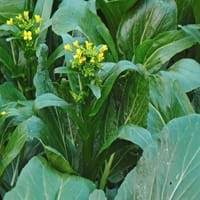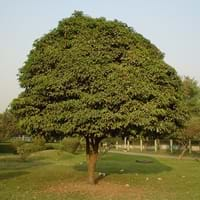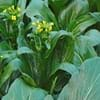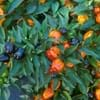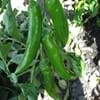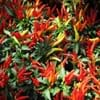Life Span
Annual
Perennial
Origin
Europe
India, Melanesia
Types
Not Available
Alphonso, Florigon, Jakarta
Number of Varieties
Not Available
Habitat
agricultural areas, Moist Soils
Subtropical climates, Tropical regions
USDA Hardiness Zone
4-10
10-15
AHS Heat Zone
9-3
Not Available
Sunset Zone
A1, A2, A3, H1, H2, 1a, 1b, 2a, 2b, 3a, 3b, 4, 5, 6, 7, 8, 9, 10, 11, 12, 13, 14, 15, 16, 17, 18, 19, 20, 21, 22, 23, 24
H1, H2, 23, 24
Habit
Upright/Erect
Oval or Rounded
Flower Color
Yellow
Yellow, Red
Flower Color Modifier
Bicolor
Bicolor
Fruit Color
Sienna, Black
Yellow, Red, Green, Orange, Pink, Rose, Bronze
Leaf Color in Spring
Green, Light Green
Red, Purple, Dark Green, Bronze
Leaf Color in Summer
White, Green, Dark Green
Red, Purple, Dark Green, Bronze
Leaf Color in Fall
White, Green, Dark Green
Red, Purple, Dark Green, Bronze
Leaf Color in Winter
White, Green, Dark Green
Light Green
Plant Season
Spring, Fall, Winter
Spring, Summer, Fall, Winter
Sunlight
Full Sun, Partial Sun
Full Sun
Type of Soil
Clay, Loam, Sand
Loam, Sand
The pH of Soil
Acidic, Neutral
Acidic, Neutral, Alkaline
Soil Drainage
Well drained
Well drained
Bloom Time
Spring, Summer
Early Spring, Spring, Late Spring, Early Summer, Summer, Winter, Late Winter
Tolerances
Drought
Drought
Where to Plant?
Container, Ground
Ground
How to Plant?
Seedlings
Grafting, Seedlings, Stem Planting, Transplanting
Plant Maintenance
Medium
High
Watering Requirements
Allow to dry out slightly between watering, Do not water the foliage, Keep the Soil well drained
Over-head watering
In Summer
Lots of watering
Lots of watering
In Spring
Moderate
Moderate
In Winter
Average Water
Average Water
Soil pH
Acidic, Neutral
Acidic, Neutral, Alkaline
Soil Type
Clay, Loam, Sand
Loam, Sand
Soil Drainage Capacity
Well drained
Well drained
Sun Exposure
Full Sun, Partial Sun
Full Sun
Pruning
Remove dead or diseased plant parts
Remove damaged leaves, Remove dead branches, Remove dead leaves
Fertilizers
8-8-8, since leafy plants, use higher nitrogen content fertilizer
All-Purpose Liquid Fertilizer
Pests and Diseases
Aphids, Beetles, Cabbage looper, Downy mildew, Fusarium leaf spot, Rust
Red blotch
Plant Tolerance
Full Sun, Humidity, Shallow soil
Drought
Flowers
Showy
Insignificant
Flower Petal Number
Single
Single
Foliage Texture
Medium
Medium
Foliage Sheen
Not Available
Glossy
Attracts
Caterpillar, Mites
Birds
Allergy
Diarrhea, Dizziness, Nausea
bullous cheilitis, contact allergic dermatitis, Urticaria
Aesthetic Uses
Not Available
Showy Purposes
Beauty Benefits
Anti-ageing, Hair Conditioner, Skin cleanser
Acne, Improve hair condition, Makes teeth white, Moisturizing, Removes dandruff
Environmental Uses
Fixes Nitrogen, Food for animals
Air purification, Food for birds, Shadow Tree
Medicinal Uses
Aging, Anti-oxidant, Digestion problems, Eliminate toxins, Nutritive, Obesity, Rich in Potassium
anti-cancer, Digestion problems, Eye Problems, High cholestrol, Immunity
Part of Plant Used
Leaf Stalks, Leaves
Whole plant
Other Uses
Culinary use, Sauces, Used to promote healthy blood flow during menstruation
Grown for shade, Used As Food, Used as Ornamental plant
Used As Indoor Plant
No
No
Used As Outdoor Plant
Yes
Yes
Garden Design
Container, Edible, Herb / Vegetable, Wildflower
Edible, Feature Plant, Fruit / Fruit Tree, Shade Trees, Tropical
Botanical Name
BRASSICA rapa( Chinensis Group)
MANGIFERA indica
Common Name
Bok Choy, Chinese Cabbage, Choy Sum, Pak Choi
Mango
In Hindi
choy sum
आम का पेड़
In German
choy sum
Mango Baum
In French
choy sum
Manguier
In Spanish
choy sum
Árbol de mango
In Greek
choy sum
Mango Tree
In Portuguese
choy sum
Mangueira
In Polish
choy sum
Drzewo mango
In Latin
choy sum
Mango ligno
Phylum
Magnoliophyta
Magnoliophyta
Class
Magnoliopsida
Magnoliopsida
Order
Capparales
Sapindales
Family
Brassicaceae
Anacardiaceae
Clade
Angiosperms, Monocots
Not Available
Tribe
Not Available
Not Available
Subfamily
Not Available
Not Available
Number of Species
Not Available
Season and Care of Choy Sum and Mango Tree
Season and care of Choy Sum and Mango Tree is important to know. While considering everything about Choy Sum and Mango Tree Care, growing season is an essential factor. Choy Sum season is Spring, Fall and Winter and Mango Tree season is Spring, Fall and Winter. The type of soil for Choy Sum is Clay, Loam, Sand and for Mango Tree is Loam, Sand while the PH of soil for Choy Sum is Acidic, Neutral and for Mango Tree is Acidic, Neutral, Alkaline.
Choy Sum and Mango Tree Physical Information
Choy Sum and Mango Tree physical information is very important for comparison. Choy Sum height is 15.20 cm and width 15.70 cm whereas Mango Tree height is 910.00 cm and width 460.00 cm. The color specification of Choy Sum and Mango Tree are as follows:
Choy Sum flower color: Yellow
Choy Sum leaf color: Green, Light Green
Mango Tree flower color: Yellow and Red
- Mango Tree leaf color: Red, Purple, Dark Green and Bronze
Care of Choy Sum and Mango Tree
Care of Choy Sum and Mango Tree include pruning, fertilizers, watering etc. Choy Sum pruning is done Remove dead or diseased plant parts and Mango Tree pruning is done Remove damaged leaves, Remove dead branches and Remove dead leaves. In summer Choy Sum needs Lots of watering and in winter, it needs Average Water. Whereas, in summer Mango Tree needs Lots of watering and in winter, it needs Average Water.
